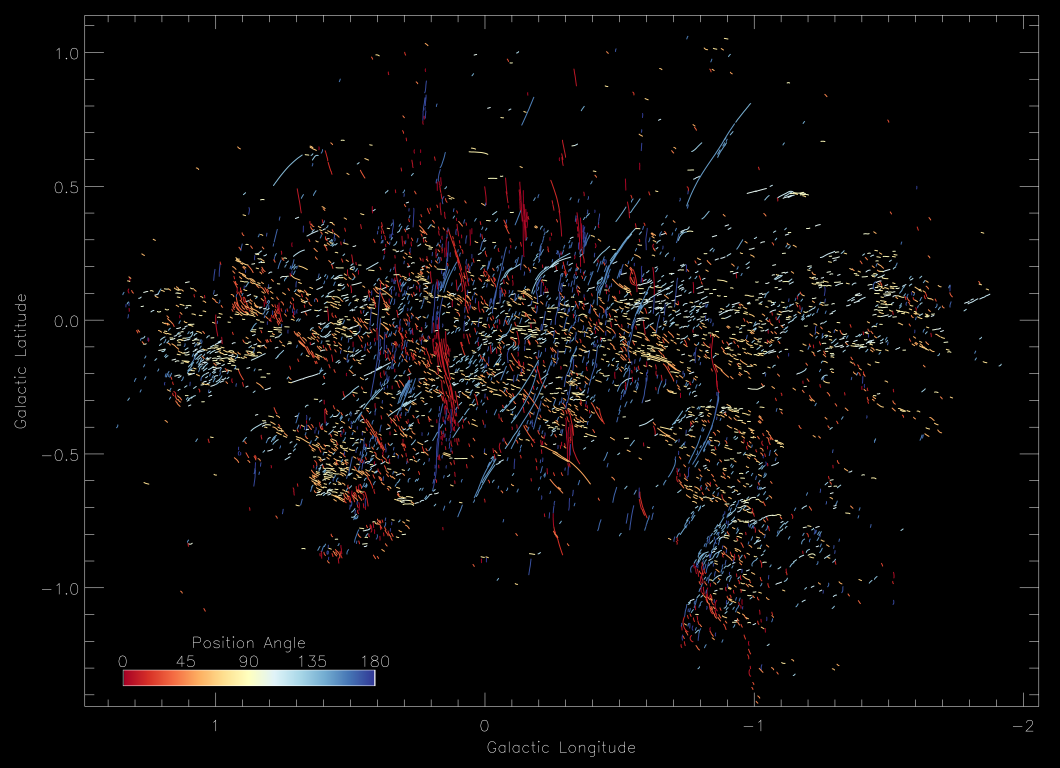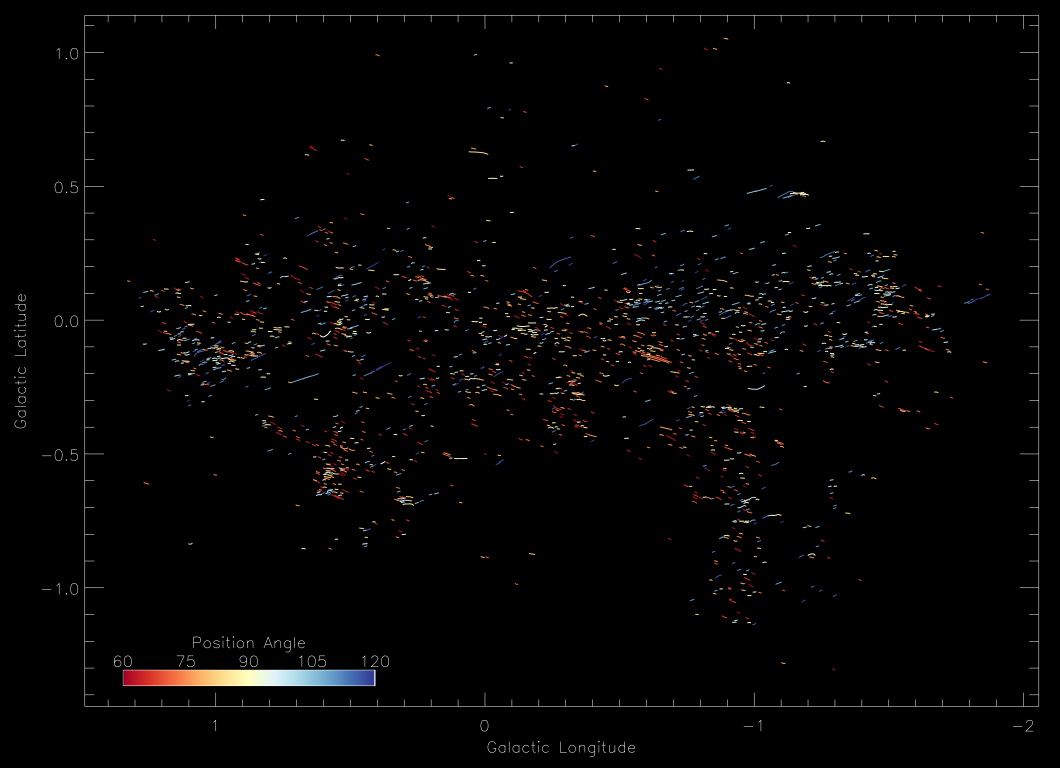
Scientists have discovered a cluster of colorful threads emanating from a supermassive black hole at the heart of the Milky Way galaxy, stunning the researchers and exciting the scientific community.
In recently released photos, Northwestern University’s Farhad Yusef-Zadeh and his collaborators discovered a new population of massive filaments, measuring 5-10 light-years in length, along the galactic plane with the appearance of several lines and dashes overlapping each other. The discovery comes after Yusef-Zadeh discovered vertical filaments near Sagittarius A* in the 1980s, the galaxy’s central supermassive black hole, according to a news release from Northwestern University.

STUDENT LOAN PAYMENT FREEZE GETS END DATE IN DEBT CEILING BILL
“It was a surprise to suddenly find a new population of structures that seem to be pointing in the direction of the black hole,” said Yusef-Zadeh. “I was actually stunned when I saw these. We had to do a lot of work to establish that we weren’t fooling ourselves. And we found that these filaments are not random but appear to be tied to the outflow of our black hole. By studying them, we could learn more about the black hole’s spin and accretion disk orientation. It is satisfying when one finds order in a middle of a chaotic field of the nucleus of our galaxy.”
The filaments from the two discoveries share some similarities, though they have multiple differences, such as how these new filaments are horizontal compared to the original vertical ones. The horizontal filaments also appear more like dots and dashes in the vein of Morse code.


Yusef-Zadeh assumes that the filaments from the 1980s discovery and the most recent discovery have different origins.
CLICK HERE TO READ MORE FROM THE WASHINGTON EXAMINER
Yusef-Zadeh believes that his work is “never complete,” and he believes researchers need to “continually challenge our ideas” to strengthen their research.
“We think they must have originated with some kind of outflow from an activity that happened a few million years ago,” Yusef-Zadeh said. “It seems to be the result of an interaction of that outflowing material with objects near it. Our work is never complete. We always need to make new observations and continually challenge our ideas and tighten up our analysis.”






